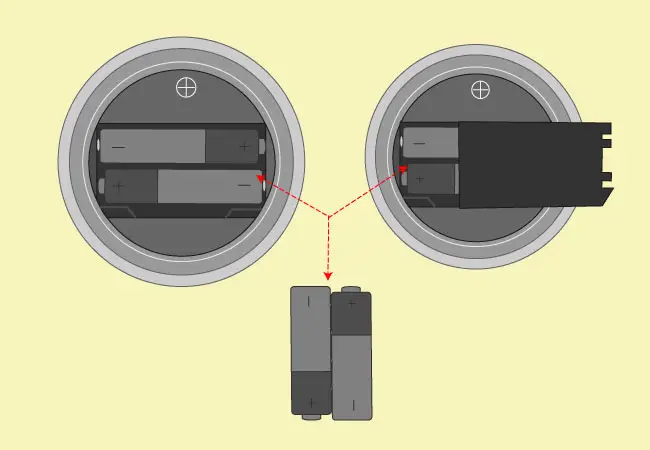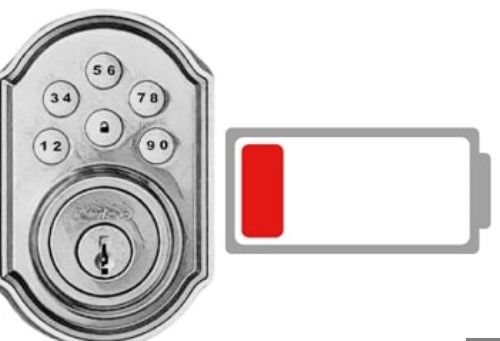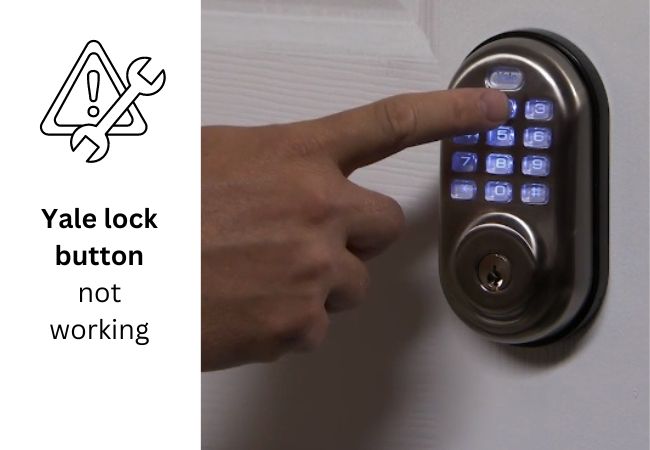Last updated on January 4th, 2024 at 06:23 pm
Are you noticing that your Yale lock button not working? Fear not! Our step-by-step troubleshooting guide covers everything from checking and replacing batteries to ensuring button functionality and addressing corrosion.
With practical tips on cleaning the battery compartment and a final test, this guide equips you to tackle the issue head-on. And if all else fails, we discuss the possibility of a replacement.
So, keep reading to pick this comprehensive guide and Say goodbye to lock button woes.
Why my Yale keypad lock button not working
Several factors may lead to keypad button issues on a Yale Smart Lock. We’ll explore the common causes and offer practical solutions:
| Cause | Symptom | Solution |
|---|---|---|
| Dead batteries | Keypad is unlit or dim | Replace batteries |
| Dirty keypad | Buttons stick or fail to register | Clean keypad with soft cloth |
| Internal software glitch | Keypad is lit but unresponsive | Perform a hard reset |
| Worn-out buttons | Some buttons work while others do not | Contact Yale support for repair |
How to fix Yale keypad lock button
Step 1: Check the Batteries
The heart of any electronic lock lies in its power source – the batteries. Start by replacing the existing batteries with two fresh alkaline AA batteries.

On the other hand, the battery polarity would be the cause of such issue, so check this out too.
Sometimes, the simplest solution is the most effective. If the problem persists, don’t fret; we’ve got more steps ahead.
Step 2: Inspect Battery Terminals

Now, let’s take a closer look at the battery terminals. Ensure they are clean and dry. Any grime or moisture can interfere with the electrical connection. If you spot any dirt, gently clean the terminals with an anti-static cloth or cotton balls dipped in rubbing alcohol.
Check your Yale lock installation for the perfect battery placement
Step 3: Battery Health Check

Damaged batteries can cause a world of trouble. Examine the batteries for dents or other deformities. If you find any, swap them out for new ones. It might sound obvious, but overlooking this step is surprisingly common.
Step 4: Verify Lock Button Operation
Let’s shift our focus to the star of the show – the lock button itself. Are you pressing it down correctly? It’s easy to overlook the basics when troubleshooting. Ensure you are pressing the button firmly and squarely.
Step 5: Check Battery Terminal Connections
Make sure the battery terminals are correctly connected to your lock button. Loose connections can lead to erratic behavior. If needed, tighten the connections to ensure a snug fit.
Step 6: Clean the Battery Compartment
A neglected battery compartment can harbor dust and lint, especially if your lock has been in storage. Use an anti-static cloth or cotton balls dipped in rubbing alcohol to give it a good wipe-down. A clean compartment ensures optimal contact between the batteries and internal components.
Step 7: Tackle Corroded Terminals
Corrosion is a common culprit in malfunctioning electronic devices. Check the battery terminals for any signs of corrosion. If you spot any, use sandpaper or steel wool to gently remove the buildup. Apply a small amount of white lithium grease using a Q-tip or cotton swab before reattaching the batteries.
Step 8: Test Your Yale Lock
After diligently following the steps above, it’s time for the moment of truth. Test your Yale lock button. Does it respond as expected? If yes, congratulations! If not, don’t worry – we have one more trick up our sleeves.
Step 9: Consider Replacement
If all else fails, it might be time to bid farewell to your old lock button. Over time, wear and tear can take a toll. Consider replacing the lock button with a new one. It’s a small investment for the security and peace of mind it provides.
Final Thoughts
While it’s frustrating when technology doesn’t work as expected, the Yale Smart Lock keypad button issue is often easily resolved with simple troubleshooting steps. By understanding the common problems and maintaining your lock, you can ensure a long-lasting, reliable smart home security feature. Should you require professional help, Yale’s customer service is an excellent resource.
